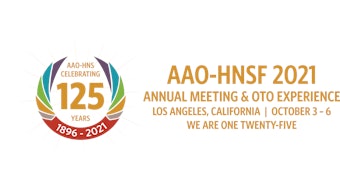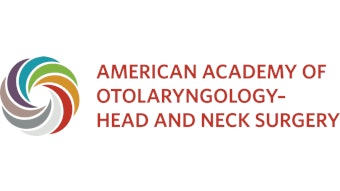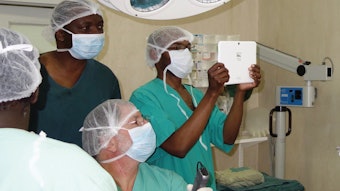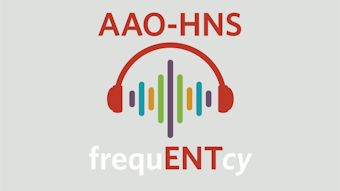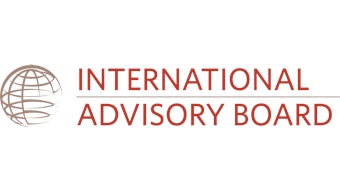Pediatric Sensorineural Hearing Loss: What Causes It and What to Do Next?
This invited article presents a brief synopsis of the AAO-HNSF 2020 Virtual Annual Meeting & OTO Experience Panel Presentation, “Pediatric Sensorineural Hearing Loss: What Causes It and What to Do Next?”
Margaret A. Kenna, MD, MPH, and Daniel Choo, MD
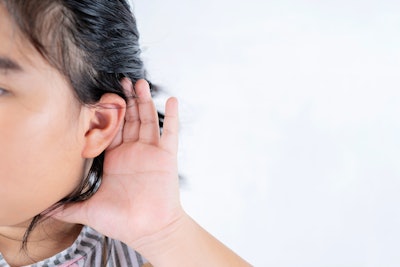
Genetics and Pediatric Sensorineural Hearing Loss
The field of pediatric sensorineural hearing loss (SNHL) is one of the most steadily evolving domains in otolaryngology, with the molecular genetic aspects leading the way. Starting with pedigree and linkage analyses, microarrays, and genome-wide association studies, ever-faster and cheaper DNA sequencing has identified hundreds of genes associated with SNHL. Currently, next generation DNA sequencing platforms provide rapid identification of known and new deafness-causing mutations, including syndromic causes that present as non-syndromic hearing loss in infancy. Whole exome and whole genome sequencing offer ever larger amounts of molecular genetic information to clinicians with the potential to identify more complex genetic hearing disorders beyond “simple” monogenic hearing losses. It is indisputable that whole genome sequencing on every patient presenting for hearing loss evaluation is on the visible horizon. Determining what to do with all that clinical data in an efficient and cost-effective manner is one of the next challenges for otolaryngologists. Additionally, when genetic therapies become available, knowledge of the specific gene/genetic mutation will be essential for patient care.
Most genetic sequencing panels screen dozens to hundreds of genes associated with pediatric hearing loss. Notably, the most useful genetic testing platforms also include evidence-based interpretation of the genotyping data and offer genetic counseling services when appropriate. Counseling matters as a common outcome from sequencing of multiple genes is to identify variants of unknown significance (VUS). These VUS may be novel variants as yet to be linked to SNHL, but in other cases may simply represent nonpathogenic variations. Since discussing genetic results with patients can be difficult and complex, collaboration with clinical geneticists and genetic counselors is key to conveying interpretations of the genotyping data and ensuring adequate patient understanding.
Imaging of the Inner Ear in Pediatric Sensorineural Hearing Loss
Prior to clinical genetic testing, imaging of the inner ear was (and continues to be) one of the most valuable components of the pediatric SNHL workup. Malformations of the cochlear and vestibular structures were first demonstrated by plain films and tomography, and then in stunning detail by high-resolution computed tomography (CT). Subsequently, the use of magnetic resonance (MR) imaging has offered the same resolution of the inner ear with the added benefit of providing high sensitivity for detecting associated or co-occurring central nervous system (CNS) anomalies. CT and MR clinical data coupled with the otolaryngologist’s experience offers prognostic information for the patient related to the likelihood of stable or progressive hearing loss as well as potential outcomes from interventions such as cochlear implantation.
Pragmatically, (non-contrast, non-gadolinium) MR imaging has supplanted CT as the initial modality for pediatric SNHL evaluation. In line with Image Gently goals, MR offers high-resolution imaging without any ionizing radiation exposure. Additionally, most MR protocols, which concurrently capture T1 and T2 brain images, have been reported to identify CNS abnormalities in up to 40% of children being scanned for SNHL. While some of these CNS anomalies are unrelated to the SNHL or of no clinical significance to the child, there are definitely findings, such as polymicrogyria, hydrocephalus, and Chiari malformations, that can be highly relevant and might have gone undiagnosed without imaging.
The robust experience and published data from imaging of common inner ear pathologies (e.g., enlarged vestibular aqueducts [EVA]) also offer prognostic information that can dramatically impact patient management. MR or CT data showing an operculum measurement > 3mm, for example, is significantly associated with progressive hearing loss. In another example, cochlear nerve deficiency or a diminutive cochlear aperture are associated with poorer speech recognition outcomes after cochlear implantation. Patient-monitoring schedules as well as long-term strategy conversations can all be guided by such helpful imaging information.
Congenital Cytomegalovirus Infection and Pediatric Sensorineural Hearing Loss
Over the past decade, the relevance of congenital cytomegalovirus (cCMV) infection to pediatric SNHL has been increasingly recognized. Spurred by growing clinical and public awareness of cCMV and its protean implications, as well as increasing support for research focusing on CMV-related hearing loss from the National Institutes on Deafness and Other Communication Disorders, this particular area of pediatric SNHL has evolved dramatically in terms of newborn screening for CMV, diagnostic testing, and even antiviral therapy.
Two areas of discussion commonly arise in CMV-related hearing loss. The first touches on the critical timing of testing for cCMV. The gold standard for diagnosing cCMV is demonstrating the presence of CMV infection within the first three weeks of life. Beyond that period, it is less clear whether a positive CMV test represents true congenital infection versus postnatally acquired CMV. There is also debate over the optimal manner of testing for cCMV (blood spot, urine, saliva; PCR versus microculture). However, the key driver is simply obtaining some type of specimen in the proper timeframe. Although making a definite diagnosis of cCMV has significant implications for management and possible antiviral therapy, obtaining newborn hearing screening (NBHS), diagnostic (ABR) hearing testing, and CMV testing within the three-week interval is challenging. As a result, the delays can result in an infant presenting for evaluation beyond the three-week window and the otolaryngologist being caught in a diagnostic predicament. Several adaptations have evolved to address these concerns. One of the most common strategies involves targeted screening for cCMV at birthing centers upon failure of the NBHS. Although failure of the NBHS does not represent a confirmed SNHL, testing at this point addresses the need for obtaining a timely specimen for CMV testing and will capture more infants with cCMV who might otherwise be missed. A second area of discussion focuses on antiviral treatment of children with SNHL and confirmed cCMV infection. The most compelling data are for infants with symptomatic (i.e., symptoms beyond SNHL, including microcephaly, petechiae, retinitis, brain calcifications, hepatosplenomegaly, anemia) cCMV infection, and hearing loss. In that clinical setting, the use of ganciclovir (parenteral) and valganciclovir (oral) have both demonstrated positive short-term and longer-term effects on hearing as well as neurodevelopmental outcomes. Although the optimal duration of therapy is unclear, preliminary data point toward a six-month course of valganciclovir in fully symptomatic infants as showing significant benefits. Notably, NIH-supported, multicenter studies are underway looking specifically at otherwise asymptomatic, cCMV-infected children for whom SNHL is the only presenting feature. While most children tolerate antiviral therapy well, there are bone marrow suppression, anemia, and hepatic and renal toxicities associated with ganciclovir and valganciclovir. Accordingly, demonstrating the risks and benefits of antiviral therapy are of particular relevance and importance in the setting of “asymptomatic” cCMV-related hearing loss.
Conclusions and the Integrative Workup of Pediatric Sensorineural Hearing Loss
In the past, a shotgun approach to the workup of pediatric SNHL often resulted in a frustratingly low yield for a concise diagnosis and a laborious diagnostic algorithm that was both costly and burdensome to the patient. In contrast, however, high-resolution imaging of the inner ear and brain, genetic screening panels for deafness-causing mutations, and testing for cCMV infection now allow the otolaryngologist to pinpoint a cause of SNHL in the majority of children presenting with SNHL in a more evidence-driven and cost-justified approach.
Furthermore, current state-of-the-art workup of a child with SNHL frequently results in an integration of two or three of these key components. As examples, imaging-demonstrated anomalies of the inner ear (bilateral EVA) can lead to specific genetic testing (Pendrin or PDS genotyping), looking for mutations that are associated with specific inner ear malformations. The converse scenario is also true—where an identified gene mutation can lead the otolaryngologist to pursue CT or MR imaging to look for those confirmatory malformations that might have relevance to interventions such as cochlear implantation. Identification of certain genetic causes in apparently non-syndromic infants may lead to additional studies looking for anomalies in other organ systems (e.g., long QT, Usher syndrome). Certain anomalies of the brain, as seen on MR imaging (e.g., brain calcifications), can also raise suspicion for CMV and trigger viral testing as well as potential antiviral treatment. Taken together, the comprehensive evaluation of a child with SNHL requires a multimodal diagnostic approach that, at the present time, integrates genetic testing panels, imaging of the inner ear and brain, and viral testing when appropriate. As evidenced by this course content over time, the best practices change in some manner almost every single year. Keeping abreast of the new information and how to integrate it into an otolaryngology practice remains the focus of this course each year and hopefully sustains its relevance and value to the Academy members.


